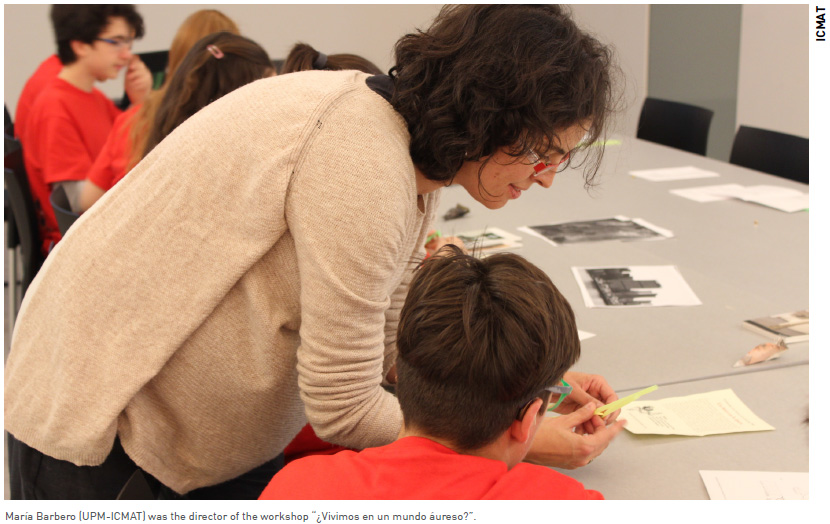 |
| Back |
| MATHEMATICS TODAY AND ICMAT NEWS |
|
MATHEMATICS TODAY ANDREW WILES AWARDED THE ABEL PRIZE FOR HIS PROOF OF FERMAT’S LAST THEOREM
On March 15th, the Norwegian Academy of Science and Letters announced that the 2016 Abel Prize would be awarded to 62 year-old Sir Andrew J. Wiles, “for his stunning proof of Fermat’s Last Theorem by way of the modularity conjecture for semistable elliptic curves, opening a new era in number theory”. Fermat’s Last Theorem presents a simple relation of integers. It states that when n is greater than 2, there are no positive integers x, y and z that satisfy the equation xn + yn = zn. In the words of ICMAT director Antonio Córdoba, who in 1994 had the occasion to celebrate the solution with Wiles at Princeton University: “Andrew Wiles scaled the heights of one the most coveted achievements in mathematics, both for its historical significance and its importance in the development of the discipline. His work brought to an end the search started by Fermat three and a half centuries ago and in which other mathematicians such as André Weil, Goro Shimura and Yutaka Taniyama have also played a decisive part”. The Weil-Shimura-Taniyama conjecture is the result of work by these three mathematicians and which concerns modular forms, an area of mathematics that in principle has no relation with Fermat’s Theorem. Nevertheless, mathematicians Kenneth Ribet and Gerhard Frey observed a connection between both problems. “That’s where Wiles’ adventure began in solving a problem that had intrigued him since childhood”, says Córdoba. Wiles first came across Fermat’s Last Theorem when he was ten years old. As he declared in the Norwegian Academy of Science communiqué, “I know from that moment I would never let it go. I had to solve it”. That is why he devoted eight years, in complete isolation, so it is said, to the proof of a special case of the Weil-Shimura-Taniyama conjecture, on the basis of which he deduced Farmat’s Last Theorem. The first proof he announced in 1993 turned out to contain an error, but after a further two years of intensive work in conjunction with Richard Taylor he managed to correct it. He presented the complete solution to the problem in 1994. The Abel Prize Committee stated that; “few results have as rich a mathematical history and as dramatic a proof as Fermat’s Last Theorem”. According to the Committee, “it was the most famous unsolved problem in the history of this branch of mathematics”. The story of this result began three centuries ago when the French mathematician, Pierre Fermat, posed the problem after reading an edition of Diophantus of Alexandria’s Arithmetica in which he deals with Pythagoras’ Theorem. Fermat subsequently wrote that; “I have discovered a wonderful proof of this statement, but the margin is too narrow to contain it”. However, the proof did not turn out to be as straightforward as Fermat first suggested. As Antonio Córdoba says; “the problem is especially important because of the large volume of mathematics that have arisen from its solution: the theory of ideal numbers, the study of algebraic bodies, and so on”. The award of this prize at last signifies the deserved recognition of a mathematician who once narrowly failed to qualify for a Fields Medal. When he presented his first proof of the theorem he was not quite 40 years old, the age limit fixed for the candidates for this prize. However, in the two years it took him to arrive at the correct result, he passed the age of forty and thus was not eligible for the award. In 1998 he received a silver Fields Medal (the IMU Silver Plaque, the only time that such a distinction has been awarded) as a special tribute, and now in 2016 he has been honoured with the Abel Prize.
THE ‘NOBEL PRIZE OF COMPUTING’ GOES TO THE FATHERS OF SECURE COMMUNICATION ON THE INTERNET
The encryption of emails and online transactions are mainly based on the asymetric cryptosystem and electronic signature devised by Whitfield Diffie and Martin E. Hellman (USA) at the height of the cold war. They have been recognized with the Turing Award 2016by the Association for Computing Machinery(ACM) for their “decisive contribution to modern cryptography”, which enables secure communication for users, banks, businesses, servers and the cloud across the internet. The award is regarded as the Nobel Prize for Computing and refers to a crucial moment in 1976 when the two winners, the current head of Sun Microsystems and this professor at Stanford Univesity, respectively, published an article entitled New Directions in Cryptography. In this article they announced a new cryptographic algorithm known as the Public Key, which was subsequently given the name of its discoverers, Diffie-Hellman, and with which they would contribute “to a future when people would communicate with each other regularly through electronic networks. This would make their communications vulnerable to theft or interference,” says Alexander L. Wolf, president of the ACM. Now, forty years later, he goes on to say, their foresight proved to be “extraordinarily” prescient. In cryptography, a key is a code used to transform a legible text into another that is incomprehensible, and vice-versa. In the two-key cryptographic system devised by the award-winners, a public code, which is not secret and can be freely distributed, is used to encrypt the message, while another private code, which is known only to the receiver, is used to decrypt it. The first code locks the content of the communication and the second is the only key that can open it. If applied the other way round, the digital signature is used. The sender of a message uses a private key to sign the content, while the receiver uses the sender’s public key to verify the digital signature. It is as if an envelope were stamped with an unmistakable seal and could be authenticated by anyone who opened it. The award is endowed with one million dollars (approximately 887,000 euros) and bears the name of Alan Turing, the British mathematician and cryptographer who deciphered the Enigma machine, used by the German military for sending messages during World War II. At that time, the systems were symmetric (sender and recever used the same key), and this required a secure channel for transmitting the key, which was not always easy to achieve. On the contrary, if the same code was used too often, it could provide enough enciphered text for the Allies to decrypt it. Perhaps if the Diffie-Hellman system had existed then, Turing might not have solved the enigma.
Pioneers in Geometry and Complex Analysis ERIC BEDFORD AND JEAN-PIERRE DEMAILLY AWARDED THE STEFAN BERGMAN PRIZE
In March of this year, the American Mathematical Society (AMS) announced the winners of the 2015 Stefan Bergman Prize. They are Eric Bedford and Jean-Pierre Demailly. This prize is worth 12,231 dollars (approximately 10,500 euros) and is awarded in recognition of the pioneering work that these two mathematicians have conducted in the fields of complex aalysis and complex geometry, both of which are “fundamental for mathematics” says Duong Phong, the chair of the selection committee. Phong explained that the work carried out by Bedford and Demailly “has had, and continues to have, and enormous influence, especially in the fields of complex differential geometry and the theory of Monge-Ampère equations”. In particular, Eric Bedford is known for his contributions to the theory of several complex variables and complex dynamics, as is Demailly, who is regarded is one of its most influential figures. Introduced in 1988, the prize honors the memory of Stefan Bergman, one of the most highly recognized researchers in the field of complex variables. Bergamn lent his name to the Bergman projection and the Bergman kernel function. Although born in Poland, he taught at Stanford University for many years. After his death, his wife stipulated in her will that funds should be devoted to a prize awarded in memory of her husband.
ICMAT NEWS THE ICMAT RECEIVES THE SEVERO OCHOA CENTER OF EXCELLENCE ACCREDITATION
On February 2nd of this year, Carmen Vela, the Secretary of State for Research, Development and Innovation, presented the Severo Ochoa accreditations of Excellence to those centers who obtained them last October. Among the research centers to receive this distinction was the Instituto de Ciencias Matemáticas (ICMAT), which was distinguished with this award for the second time running. The accreditation is valid for a period of four years and is endowed with a total funding of four million euros. Says Diego Córdoba,ICMAT member and the principal researcher for the Severo Ochoa project: “This is a further confirmation of the international standing of the ICMAT. The Institute aspires to be among the very best research centers in the world, and thanks to the renewal of the Severo Ochoa program this ambitious project can be consolidated”. “The Severo Ochoa project is vital for the ICMAT to be able to tackle the program of activities that have made it a home for the international mathematical community and the driving force for the development of mathematics in Spain”, states Antonio Córdoba, recently appointed as director of the ICMAT. In his opinion, “obtaining this new accreditation for the period 2016-19, and thereby confirming the recognition already obtained for the 2012-2015 period, means the consolidation of the ICMAT project and a great stimulus for the future”. Together with other sources of funding from the European Community, from the MINECO, and entities such as LA CAIXA, BBVA and FUJITSU, this funding from the Severo Ochoa constitutes the main resource, says Córdoba. This distinction is granted to research centers that have a strong scientific impact and leadership internationally and which are regarded as the best in the world in their respective areas. Each institute receives a million euros annually to help to improve research of excellence in each different field.
30 SECONDARY-SCHOOL STUDENTS EXPERIENCE MATHEMATICAL RESEARCH FIRST-HAND AT THE ICMAT
For the fourth consecutive year, the ICMAT participated in the “4ESO+empresa” scheme with 25 schools from the Community of Madrid. On the 15th, 16th and 17th of March, 30 4th Grade secondary-school students worked alongside scientists from the center as part of a program whose aim is to enable pupils to experience the daily work of a mathematician for themselves. The main aim of the activities was to bring the students into direct contact with a type of mathematics different from that they learn in the classroom, one that is creative, exciting and related to other branches of knowledge. To that end, the program included activities conducted by young researchers belonging to the center. “They are the protagonists of these activities because they provide the closest model for the students”, says Manuel de León, who is responsible for this initiative at the ICMAT. David Alfaya, a La Caixa-Severo Ochoa PhD student, organized a mathematical competition in which the students, divided into groups, had to tackle various mathematical challenges. Ángela Capel, who is also a La Caixa-Severo Ochoa doctoral student, and María Ángeles Ferrero, an FPI-Severo Ochoa PhD student, gave talks in their workshops on modular arithmetic. In addition to these workshops, a talk was also given by Marie-Curie post-doctoral researcher at the ICMAT, Mario García, on the relation of mathematics, specifically geometry, to the most up-to-date physics; the theory of relativity and the grand unified theory; a session of creative and exciting mathematical problems conducted by Marco Castrillón (UCM-ICMAT), a talk about the ICMAT and mathematical research as a profession, given by Manuel de León (CSIC-ICMAT), and a workshop run by Florentino Borondo (ICMAT-UAM). ICMAT director Antonio Córdoba welcomed the students, while Ricardo Martínez de Madariaga, head of the CFTMAT Library, introduced the students to the library facilities.
THE ICMAT COLLABORATES FOR THE FIRST TIME IN THE CÍRCULO DE BELLAS ARTES SCIENTIFIC FAIR The Universidad Politécnica de Madrid professor and member of the ICMAT, María Barbero, conducted a total of four sessions in the “Do we live in a golden world?” workshop as part of the Círculo de Bellas Artes “With Science in Schools” program. This activity, which was held on March 9th and 10th, enabled pupils from Madrid to show their scientific projects to the general public and to students from other schools, as well as to enjoy the outreach activities that were organized in parallel. The Golden Ratio and the Fibonacci sequence were the main mathematical features of the “Do we live in a golden world?” workshop given by María Barbero, professor at the Universidad Politécnica de Madrid and ICMAT member on March 9th-10th. The activity formed part of the Círculo de Bellas Artes “With Science in Schools” scientific fair, in which the ICMAT collaborated this year for the first time. After an introduction of a theoretical nature, the students were able to experiment with ideas in mathematics. They looked for the Golden Ratio in books, sheets of paper, in ID documents and in their own faces with a ruler and compass they fashioned themselves. Finally, they had to come up with the winning strategy for a simple board game by experimenting, conjecturing and seeking a general answer to the problem. And lo and behold, the Golden Ratio appeared in the solution. |

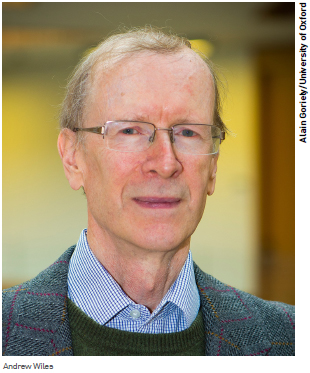 The 2016 Abel Prize was awarded on March 15th of this year to the English mathematician Andrew Wiles for his proof of Fermat’s Last Theorem. The prize is worth 600,000 euros and will be presented to Wiles on May 25th by Crown Prince Haakon Magnus.
The 2016 Abel Prize was awarded on March 15th of this year to the English mathematician Andrew Wiles for his proof of Fermat’s Last Theorem. The prize is worth 600,000 euros and will be presented to Wiles on May 25th by Crown Prince Haakon Magnus.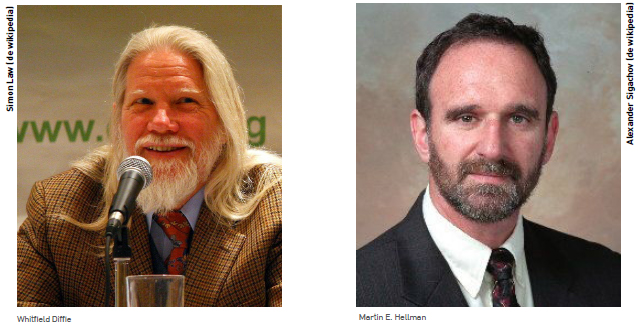
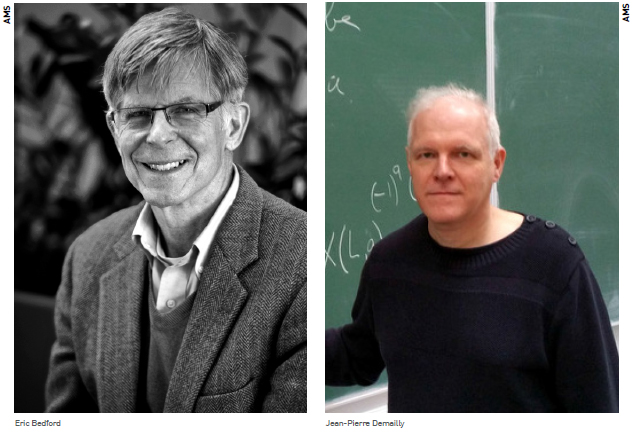
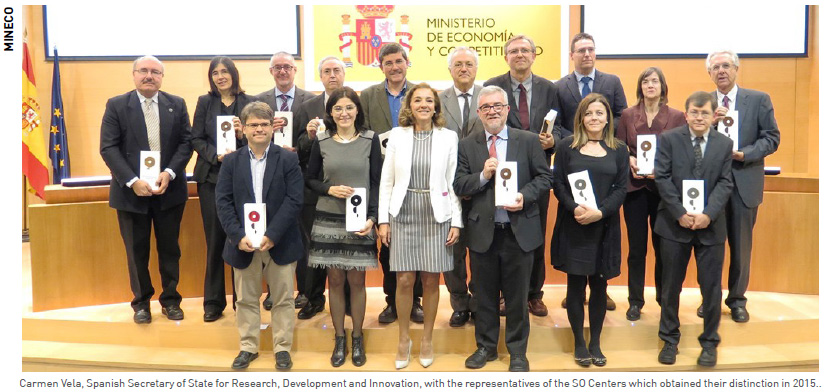
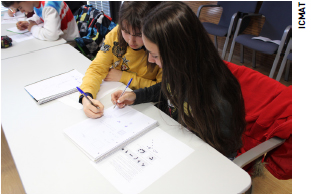 Over a period of three days the ICMAT hosted 30 pupils from 25 secondary schools in the Community of Madrid in order to show them how mathematical researchers work at a center of excellence. Mathematics concerning the theory of relativity and the grand unified theory, graph theory and algebraic congruencies, and a career in mathematical research are just some of the subjects presented in the program. This initiative forms part of the Community of Madrid “4ESO+empresa” scheme that enables students to do stays and visits at companies and research centers.
Over a period of three days the ICMAT hosted 30 pupils from 25 secondary schools in the Community of Madrid in order to show them how mathematical researchers work at a center of excellence. Mathematics concerning the theory of relativity and the grand unified theory, graph theory and algebraic congruencies, and a career in mathematical research are just some of the subjects presented in the program. This initiative forms part of the Community of Madrid “4ESO+empresa” scheme that enables students to do stays and visits at companies and research centers.